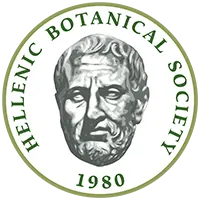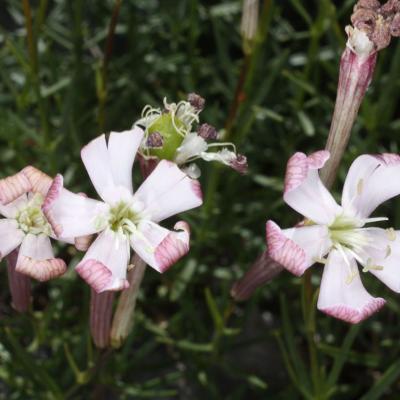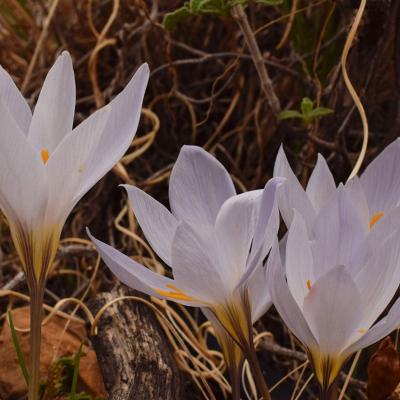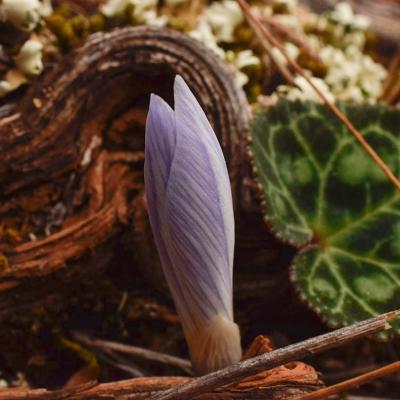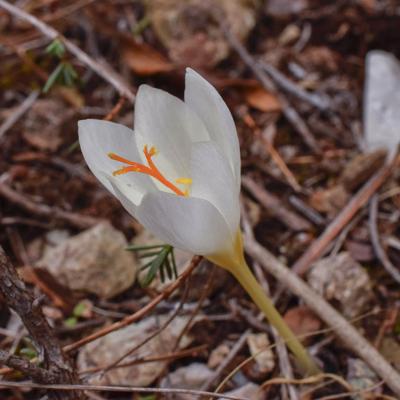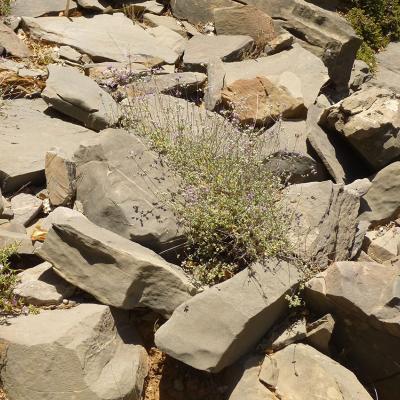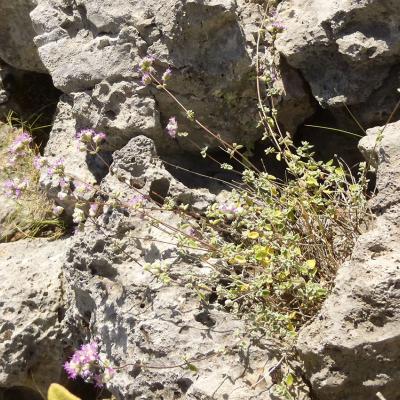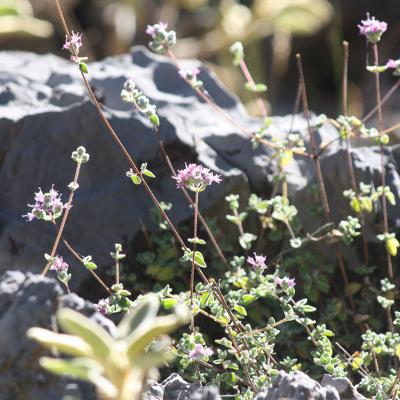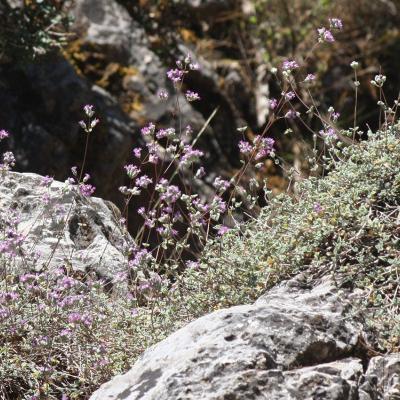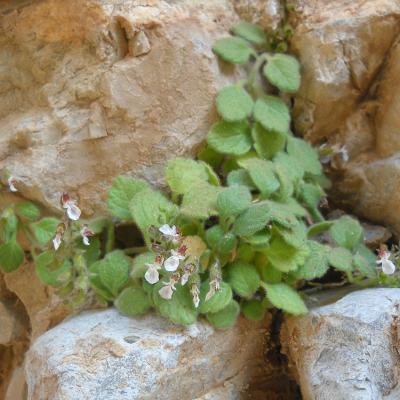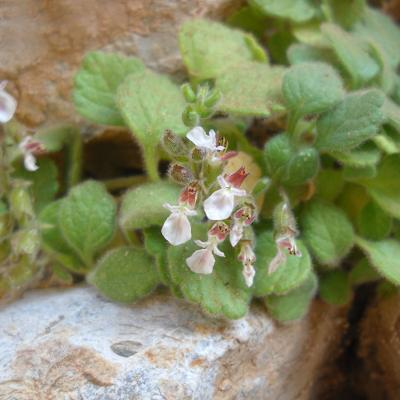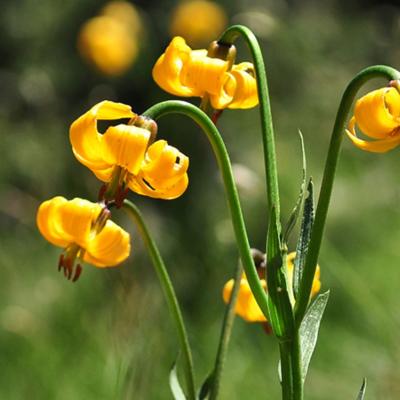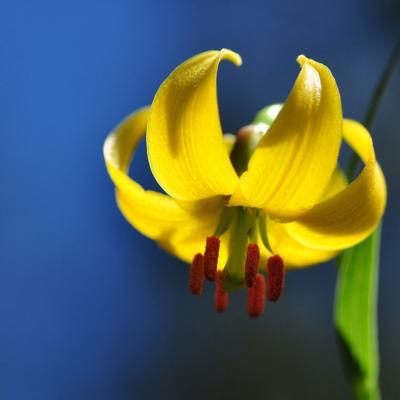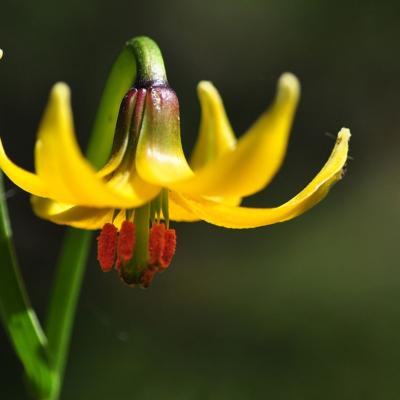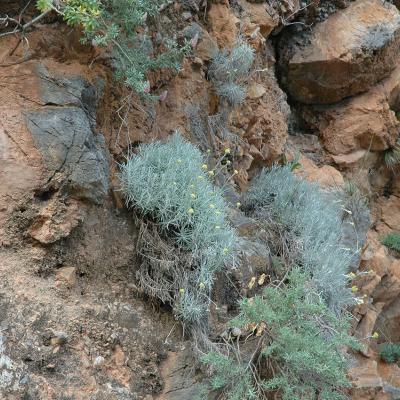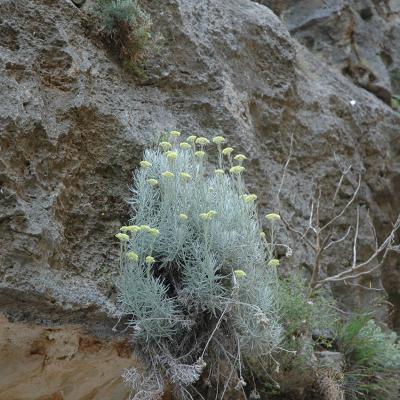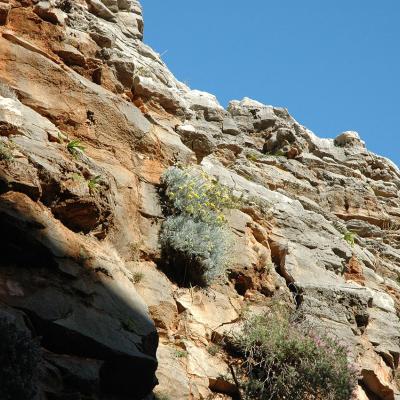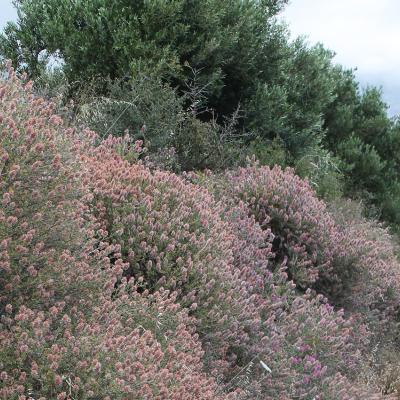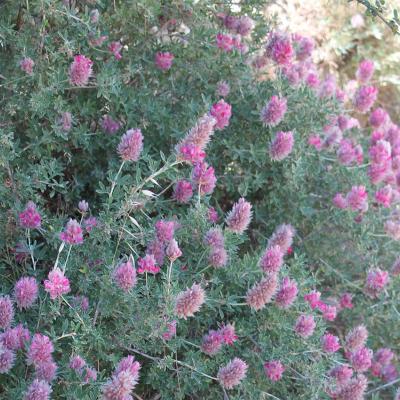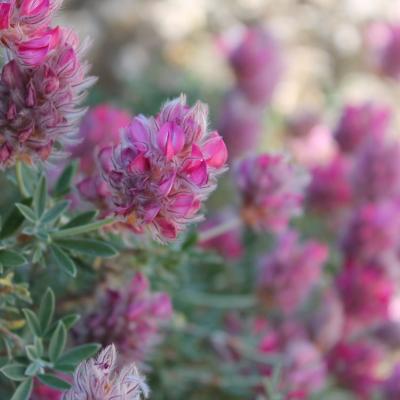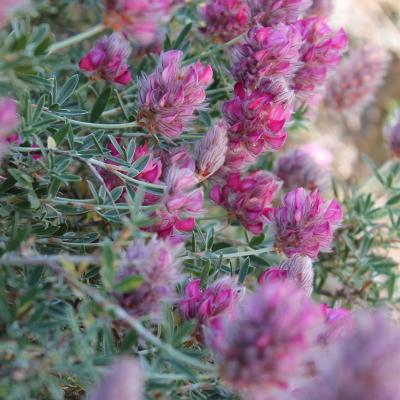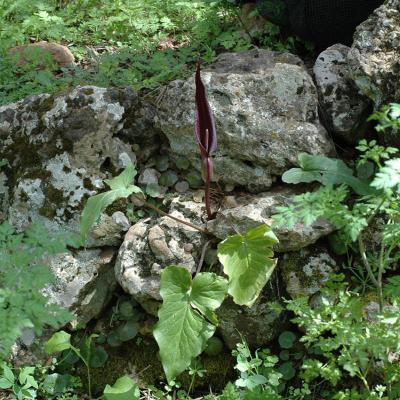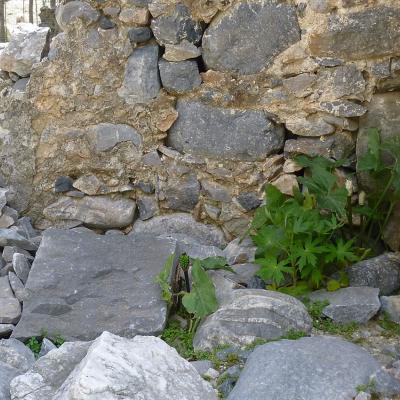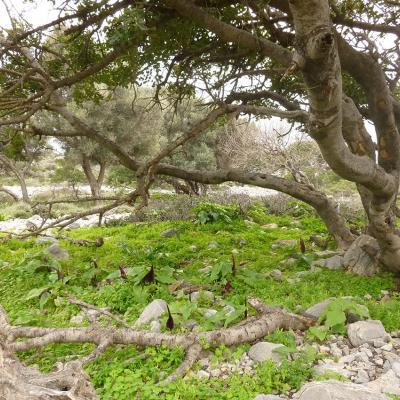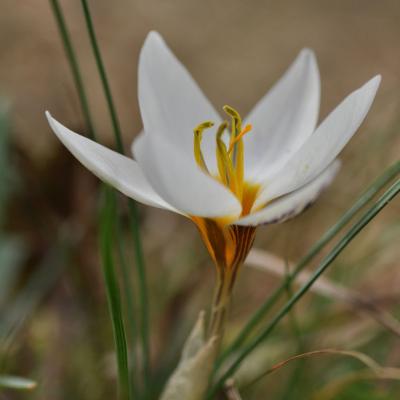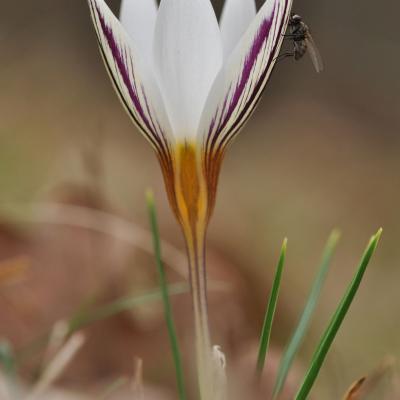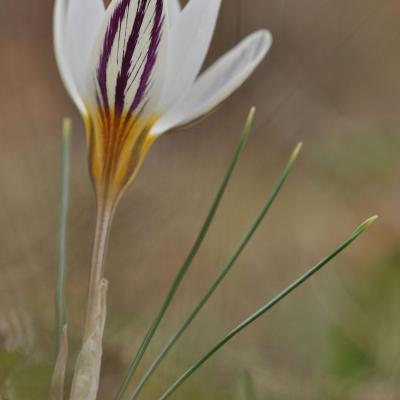Spiranthes spiralis is an orchid, which, unlike all other orchids in our country that bloom in spring, blooms in the fall (September to November). It its name derives from the spiral arrangement of its flowers. The flowering stem grows right next to a rosette, whose life lasts for a vegetative period and then dries. From the base of the dried rosette grows the flowering stem, which carries up to 30 small whitewashed flowers. The lower flowers blossom earlier than those found at the top of the inflorescence. Pollination occurs with insects that are attracted by nectar.
Silene orphanidis Boiss is a rare local endemic that occurs only in places around the top of Mount Athos and at an altitude ranging from 1700 to 2000 m. It is found in rocky slopes and slopes of limestone rocks in semi-shaded places, near and above the tree limit, with a very small population of 60 to 100 individuals. The conservation status of the species, which is listed in Annex II of the Directive 92/43/EC, was assessed as Favourable based on the latest national report (2007-2012), while according to the IUCN Red List, the species has been classified as Endangered (EN).
Crocus cancellatus subsp. mazziaricus is a geophyte with distribution almost in all Greece, except Crete and the islands of Northeast Aegean, the Balkans and northwest Turkey. It is the first Crocus species that flowers in autumn, with a flowering season from September to November. This species can be found from sea level up to 1500 meters in phrygana, forest edges and rocky locations.
Origanum microphyllum (Cretan marjoram) is a perennial aromatic shrub, endemic to the island of Crete. It occurs in the wider area of Lefka Ori and Dikti massifs, in a notable altitude range, from almost sea level up to 1800 m. The typical habitat of the species is open stony and rocky sites, but also phrygana and forest clearings.
Perennial with woody base, leaves broadly ovate to suborbicular, white tomentose to both sides. Flowering shoots up to 15 cm, slender, brittle, tomentose-villous. Flowers with pink to reddish-purple corollas, forming dense and narrow spikes. It grows in vertical limestone cliffs up to 500 m and flowers from May to July (occasionally later). T. montbretii is a variable species divided into 5 subspecies, distributed in Greece (Dodecanese Islands), S. Anatolia, W. Syria, Lebanon and Palestine. T. montbretii subsp.
Lilium albanicum is one of the five representatives of the genus Lilium in Greece and one of the two Greek species with yellow flowers. Its distribution within borders includes Pindos and the mountains of northern Greece, while outside Greece it is located in Albania, Bulgaria and the former Yugoslavia. This impressive plant occurs in meadows and forest openings at high altitudes, usually higher than 1450 m, and can reach up to 2200 m. It blooms in June and July.
Helichrysum heldreichii is a local endemic species of Crete and occurs only on vertical limestone rocks in two gorges of Chania Perfecture, the Samaria Gorge and the Aradena Gorge. The population of the species has a total of less than 2,000 individuals. It flowers from May to June.
Branched chamaephyte of a maximum height of 100 cm, pinnate leaves, covered with gray hair. The flowers appear in dense racemes from April to early June, depending on the location and altitude. It is endemic to Crete, very common in some areas, where it forms large populations. It grows in stony, limestone slopes with phrygana, even at the edges of roads, at altitudes up to 1100 m. A recent report from the island of Rhodes seems to be random insertion.
Arum purpureospathum is an endemic species of Kriti and Karpathos (KK) floristic region, known to occur in a few sites in western Crete (Sfakia district) and in Karpathos. The locus classicus is the settlement of Palea Agia Roumeli, at the exit of Samaria gorge, where A. purpureospathum grows in stony fields, but also among ruins of stone houses and terraces. It is also often found in shady locations under thickets with carob trees and olive groves, at altitudes ranging from sea level to 800 m (at Agios Ioannis settlement).
Crocus biflorus subsp. stridii is a fairly rare species, Greek endemic, known so far only from the prefectures of Thessaloniki and Xanthi. Its fragrant flowers, of white or purple color, with dark stripes on all three tepala, coupled with the rarity, make it very attractive for collectors, so it is included in the Red Data Book of 1995 with the designation "Vulnerable".
This subspecies flowers with 5-8 leaves during January and February. It grows in open grassy or sandy places, at an altitude of 30-800 m.
